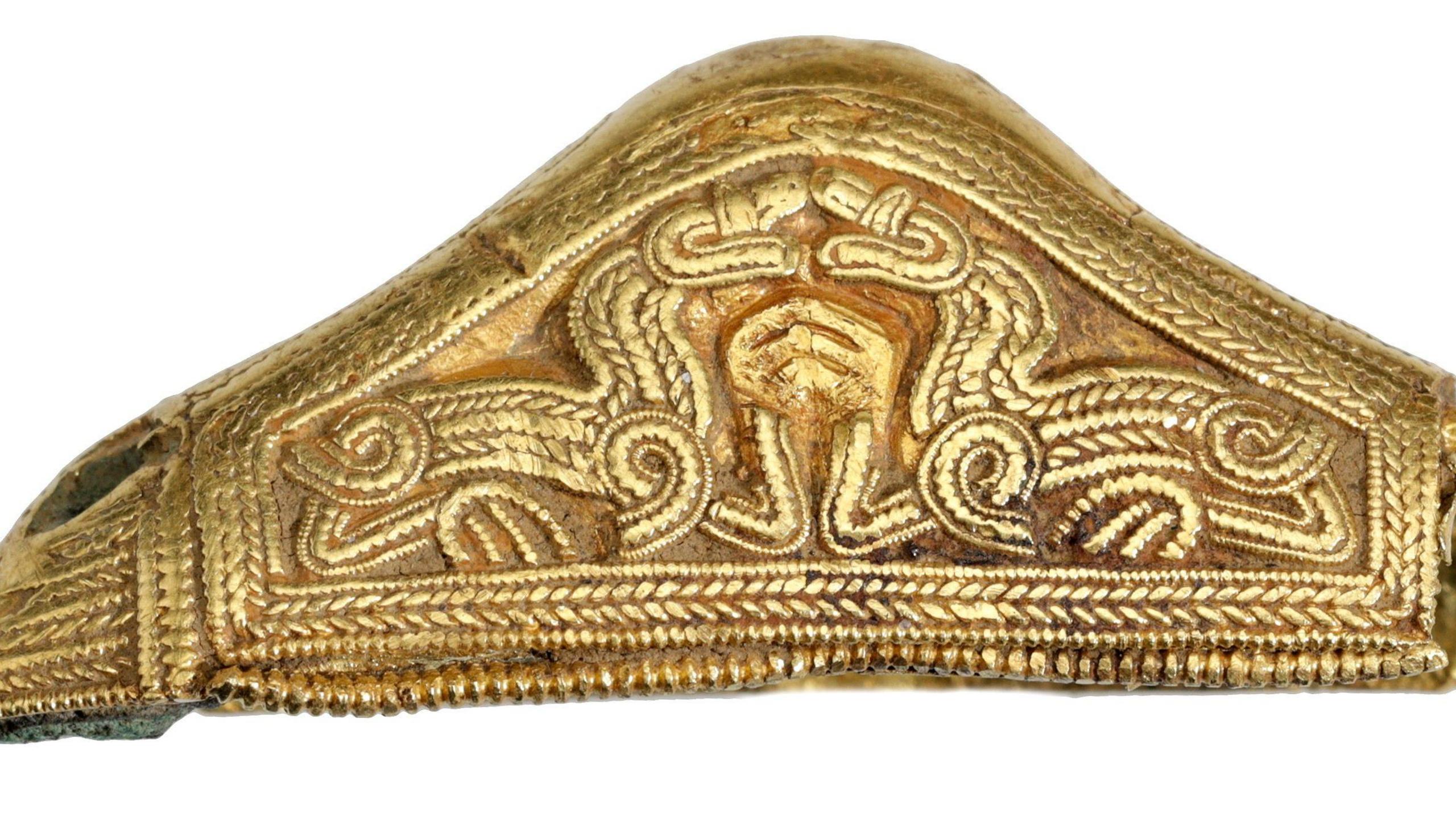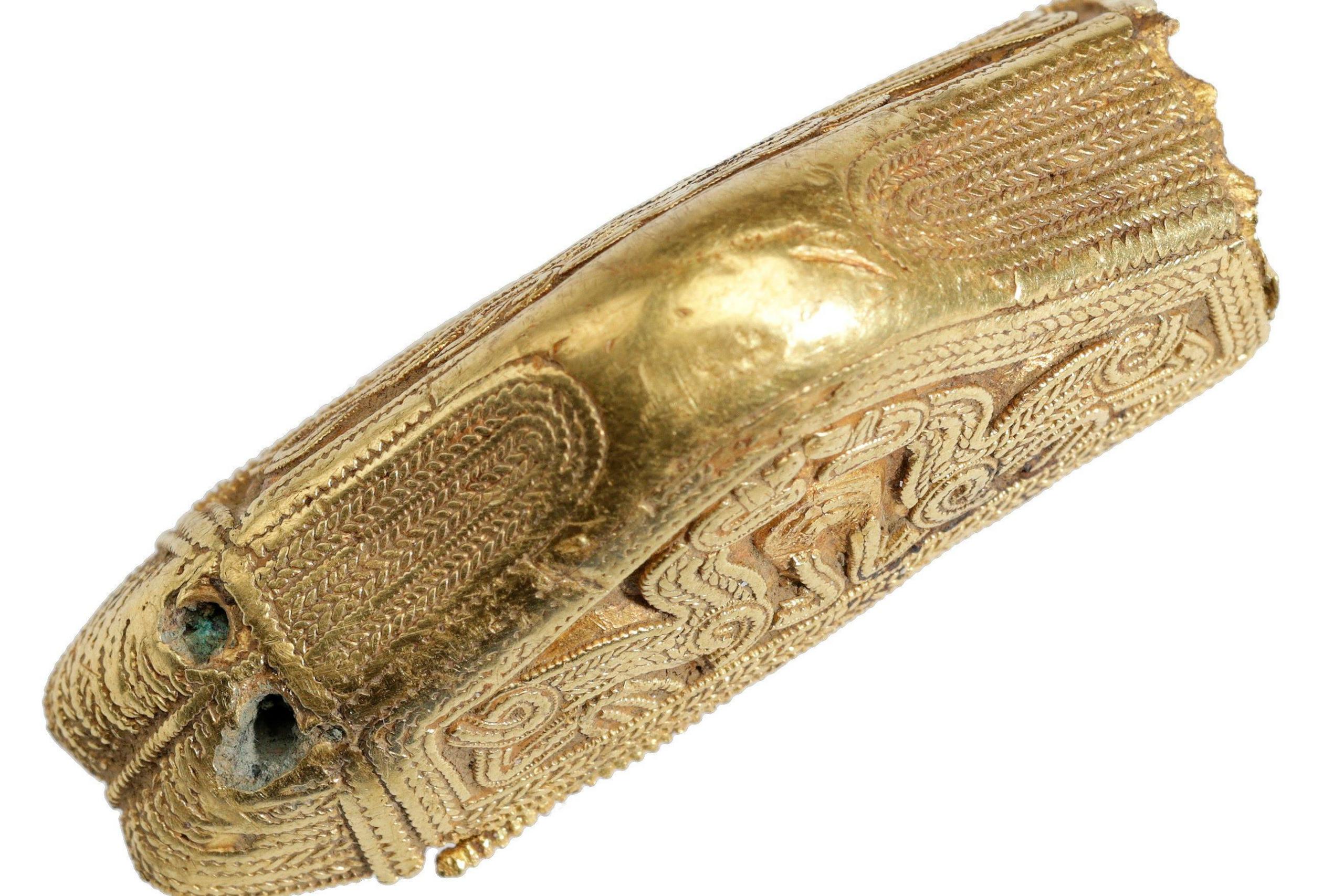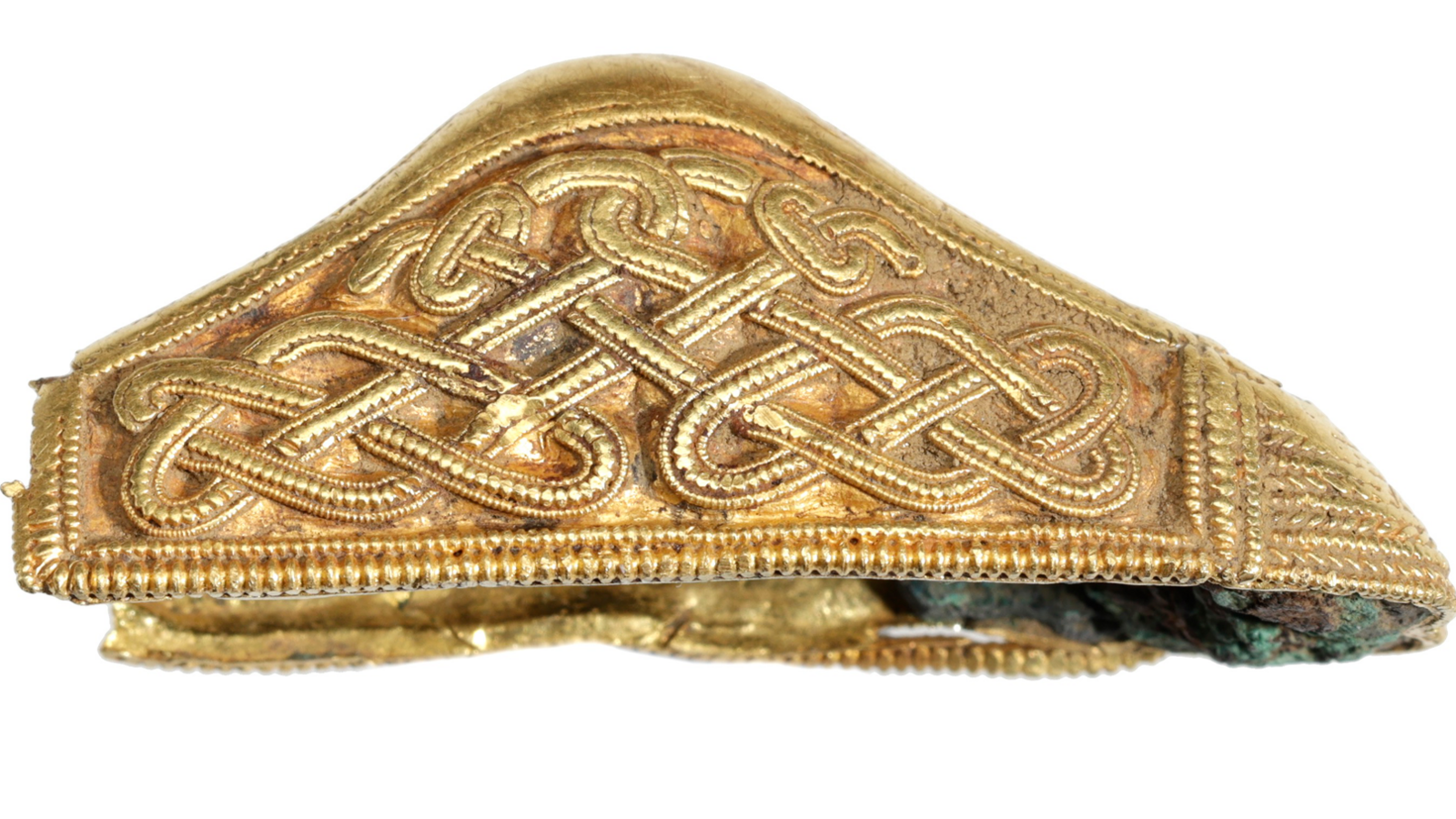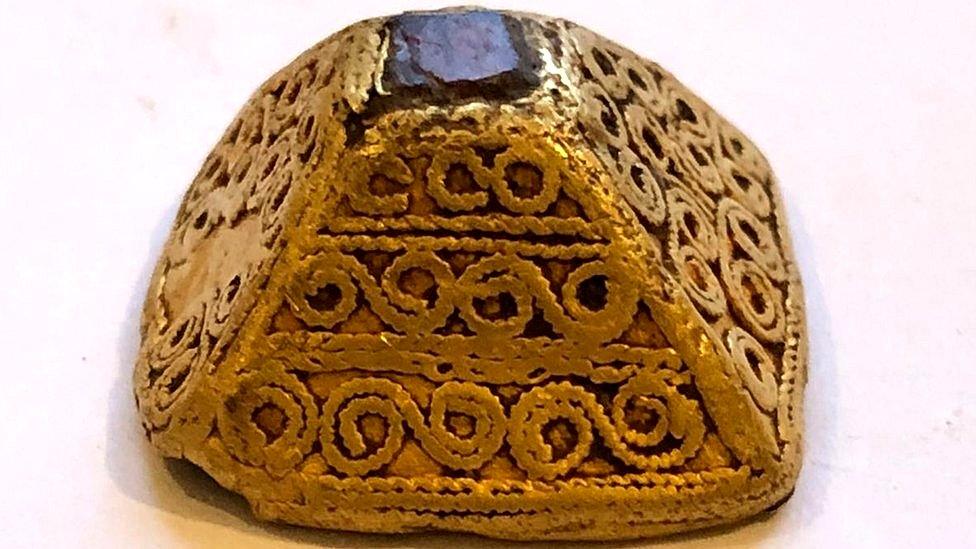Saxon sword pommel fetches £16,000 at auction

An artefact expert said one side featured either two dragons or beasts facing each other
- Published
A gold Saxon sword pommel discovered by an 81-year-old metal detectorist has sold at auction for £16,000.
The 7th Century pommel, measuring 4cm by 1.5cm and weighing 20.5g, was found in a field in Billesdon, Leicestershire, in 2021.
It was declared as treasure but disclaimed after Leicester Museum declined to buy it.
Prior to the auction on Thursday, auctioneers Noonans Mayfair said the "fabulous" pommel was expected to fetch between £15,000 and £18,000.

The gold Saxon sword pommel was discovered by an 81-year-old metal detectorist in Leicestershire in 2021
The auction firm said the woman who discovered the pommel, who does not want to be named, had been detecting for more than 60 years.
It said when she started detecting in the 1960s, people asked her what she was doing, and she told them she was looking for bombs.
She has since found many medieval and Roman coins, the firm added.
And on 8 July 2021, she recalls receiving a signal from her detector while searching a field that "everybody said had nothing in it".
"After digging to a depth of seven inches, I discovered a gold Saxon sword pommel dating to the early 7th Century AD decorated with a filigree pattern," the detectorist said.
She added she would be sharing the proceeds from the sale with the landowner.

Nigel Mills said the other side featured an interlaced snakelike pattern
Nigel Mills, artefact and coin expert at the auction house, said the pommel would have been fixed to the end of the sword handle, both as a counterbalance and to stop the hand slipping.
He said the one found was a "beautiful example of fine Anglo-Saxon gold".
"It is of cocked hat form using beaded wire filigree ornamentation," he added.
"On one side are two dragons or beasts facing each other with their heads and front paws touching. The other side has an interlaced snake-like pattern.
"It compares with the detectorist-found Staffordshire hoard of gold jewellery, while the motif of the confronting beasts on the sword mounts can be seen on a shield from the Sutton Hoo ship burial.
"The imagery displayed would have imbued a mystical power to the sword."
Follow BBC Leicester on Facebook, external, on X, external, or on Instagram, external. Send your story ideas to eastmidsnews@bbc.co.uk, external or via WhatsApp, external on 0808 100 2210.
Related topics
- Published22 February 2024

- Published1 September 2023

- Published6 March 2023
